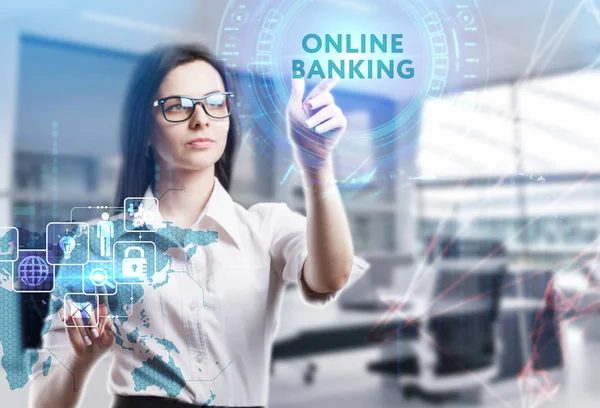Online gaming in the UK has long been dominated by well-regulated operators offering real-money slots, poker, and sports betting. But over the past few years, a new type of platform has sparked curiosity: sweepstakes casinos.
Popularised in the United States, these sites offer a casino-style experience without requiring players to stake real cash. Instead, they use a dual-currency system and operate under what’s known as the “no purchase necessary” model. UK players, drawn by the promise of free entries and real prizes, are beginning to explore these sites—raising an important legal question:
Are sweepstakes casinos legal in the UK?
Before diving into the legalities, it’s essential to understand how these platforms work—and what makes them fundamentally different from traditional online casinos.
What Are Sweepstakes Casinos?
At a glance, sweepstakes casinos may look like any standard online gaming site. You’ll find digital slots, table games, and even jackpots—but the way they operate is markedly different from typical real-money operators.
Rather than requiring a monetary deposit, these platforms use two virtual currencies:
- Gold Coins (GC): Used for fun, recreational play. They have no monetary value and cannot be redeemed.
- Sweeps Coins (SC): These are the key attraction. While they are not purchased directly, they are earned via promotions, daily logins, social media contests—or as a free bonus with Gold Coin purchases. Crucially, Sweeps Coins can often be redeemed for cash prizes, depending on the platform’s terms and jurisdiction.
This structure allows these sites to fall outside strict gambling definitions in many U.S. states. Whether that same logic holds water in the UK is more complex—and we’ll explore that shortly.
Are Sweepstakes Casinos Legal in the UK?
The legal status of sweepstakes casinos in the UK is not as clearly defined as it is in the United States. In Britain, the central piece of legislation governing this sector is the Gambling Act 2005, enforced by the UK Gambling Commission (UKGC). This act categorises gambling as involving three key elements:
- Consideration (payment)
- Chance
- A prize
If all three elements are present, the activity is considered gambling and thus falls under the UK’s licensing and regulatory framework.
Sweepstakes casinos operate in a grey area because, on the surface, they avoid the first element—consideration. They typically offer “free” gameplay using Sweeps Coins awarded through promotions, contests, or bonus offers. The key legal argument made by such platforms is that no direct purchase is necessary to enter, which might exclude them from being classified as gambling under UK law.
However, UK law also considers indirect or disguised payment. If players are essentially buying Gold Coins with no intrinsic value just to receive Sweeps Coins that can be redeemed for prizes, regulators could interpret that as a form of consideration—thus classifying the platform as a gambling operator.
As of 2025, no sweepstakes casino operates under a UKGC licence, and the UKGC has not explicitly approved or prohibited these platforms. This leaves players in a legally ambiguous position, potentially using offshore sites not subject to the UK’s consumer protections or dispute resolution mechanisms.
Understanding UK Law: Gambling vs. Prize Competitions
To understand where sweepstakes casinos may (or may not) fall legally in the UK, it’s helpful to distinguish between gambling and prize competitions.
Under the Gambling Act 2005, prize competitions are lawful provided that skill is involved to eliminate the element of pure chance. For example, requiring entrants to answer a trivia question or solve a puzzle before entering a draw makes it a legal competition—not gambling.
However, sweepstakes casinos do not generally involve any skill. Players engage in casino-style games—slots, roulette, blackjack—that are entirely chance-based. The fact that no purchase is technically required is not always enough. If a regulator determines that access to Sweeps Coins is disproportionately tied to purchases (via Gold Coin packages), the site might be interpreted as offering illegal lotteries or unlicensed gambling services.
Additionally, UK law requires transparency and fairness in promotional competitions, including clear terms of entry, odds of winning, and prize values. Many US-based sweepstakes casinos fail to meet these standards for UK participants.
No Purchase Necessary? The Core Legal Loophole
The “no purchase necessary” clause is the linchpin of the sweepstakes casino model. It’s what allows them to operate in the U.S. in states where online gambling is banned. The idea is simple: if players aren’t required to pay to enter or win, the platform isn’t technically a gambling operation.
But in the UK, this defence is not watertight.
Regulators here take a substance-over-form approach. If the overall design of a sweepstakes casino encourages or nudges users to spend money to gain better access to prizes (even if a free method exists, such as mailing a request), the law may view the site as an unlicensed gambling provider.
This legal interpretation aligns with UK guidance on lotteries and promotions, which must avoid resembling gambling in their execution. Just because something is “free to enter” doesn’t automatically exclude it from regulation—especially if:
- Players can only make meaningful progress by purchasing Gold Coins.
- The games are purely chance-based.
- Cash redemption is possible for virtual currency winnings.
In short, the presence of a “free entry” option doesn’t guarantee immunity from UK gambling laws. It’s the practical accessibility and balance between paid and unpaid play that determines whether the platform falls foul of the law.
What the UK Gambling Commission Says (and Doesn’t Say)
One of the most telling signs of the ambiguous nature of sweepstakes casinos in the UK is the silence of the UK Gambling Commission (UKGC) on the matter.
While the UKGC provides clear and detailed guidance on prize competitions, free draws, and standard gambling activities, it has not published any direct commentary on sweepstakes casinos. This lack of formal recognition does not mean they are legal—it simply means they have not yet been properly tested in the UK legal system.
What the UKGC has said in its published materials is that “free draws and prize competitions are not regulated”—but only when they clearly do not involve gambling. That typically requires:
- No element of chance without skill
- No indirect payment or disguised entry fee
- Transparent terms and fair conditions
Sweepstakes casinos, which mimic real-money casino sites and offer games of pure chance, could easily fall under regulatory scrutiny if they target or accept UK players without adhering to British licensing laws.
To date, no major sweepstakes brand—such as Stake.us, Chumba Casino, or Pulsz—holds a UKGC licence. This means their activities in the UK, even if technically accessible, are operating outside the scope of regulated gambling in Britain.
Can UK Players Access US-Based Sweepstakes Casinos?
Technically speaking, yes—UK players can access some sweepstakes casinos, though many of the larger platforms either block UK IP addresses or include the UK in their list of excluded countries within their terms and conditions.
Some players report being able to register and play using VPNs or by bypassing geo-restrictions—however, this raises a host of legal and practical issues:
- Terms of Service Violation: Accessing a site from a prohibited jurisdiction breaches most platforms’ user agreements, which can result in suspension or forfeiture of winnings.
- Prize Redemption Risks: Even if you win using Sweeps Coins, the platform may refuse to redeem your prizes if they determine you’re based in an ineligible location.
- Consumer Protection Void: Without UKGC oversight, you have no legal recourse if something goes wrong—no ombudsman, no guaranteed complaint handling, and no compensation.
- Payment and Identity Verification: Know Your Customer (KYC) checks could block UK players from verifying accounts or redeeming prizes, particularly when proof of address or bank details are required.
The bottom line is: accessibility does not equal legality, and UK players should exercise caution before using offshore sweepstakes sites—especially those without transparent jurisdictional coverage or regulatory safeguards.












 Bitcoin
Bitcoin  Ethereum
Ethereum  Tether
Tether  XRP
XRP  USDC
USDC  Solana
Solana  TRON
TRON  Lido Staked Ether
Lido Staked Ether  Cardano
Cardano  Avalanche
Avalanche  Toncoin
Toncoin